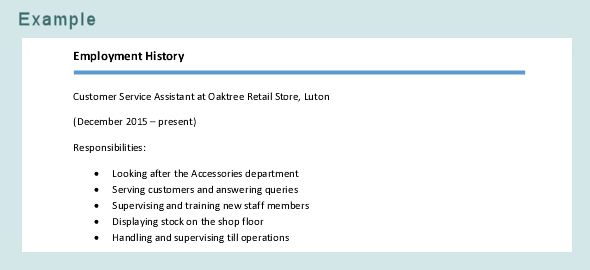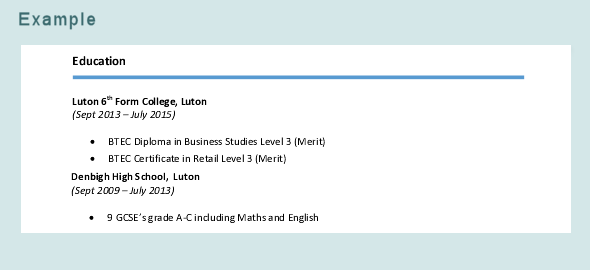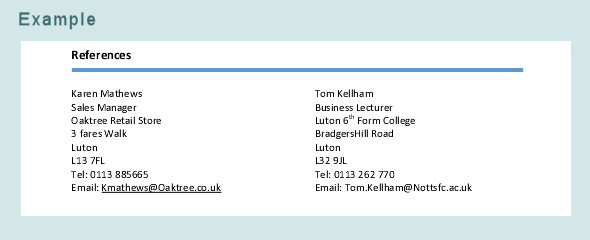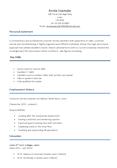How to write a CV
A CV is your first chance to make a good impression on an employer, so it's important you take your time to get it right.
What is a CV?
A CV is a brief summary of your education and work experience that shows you have the necessary skills and qualities to do the job you are applying for.
CV stands for 'curriculum vitae', which means 'course of life' in Latin.
What do I put in a CV?
1. Personal details
Include your name, address and contact details.

2. Personal profile
A sentence or two summarising your main strengths and career aims.

3. Work experience
List your jobs, starting with the most recent first.
For each job, include:
- job title
- organisation
- location
- duties and achievements
- dates of employment.

4. Qualifications
List your qualifications, starting with the most recent first.
You should include:
- the school or college where you studied
- the dates you attended the school or college
- the qualification type, eg A-level or GCSE
- the subjects and grades achieved - if you don't have your grades yet, put 'pending results'.

5. Interests and hobbies
Keep this brief - just a sentence or two giving your interests outside of work.

6. References
Give the names and contact details of people who can give feedback about you and your work.
You could give the name of a teacher and, if possible, a supervisor from one of the places you have worked.
Make sure you ask permission from the people before you put their names down as referees.
You can put 'references available on request' instead if you want to.

